Kulebra and the Souls of Limbo review
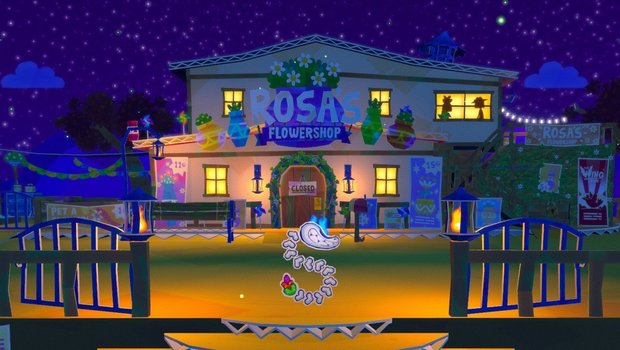
- 0 Comments
Time-looping afterlife adventure charms with its presentation, though a lack of satisfying character resolutions lowers the bar
Death is rarely a cheerful subject of conversation. After all, it’s the ultimate end of all things – once you die, there’s no going back to the world you know. It’s no surprise then, that across cultures we have attempted to make sense of what an afterlife would look like if it was a tangible place. In Kulebra and the Souls of Limbo, the otherworldly realm is personified as a vibrant place where skeletal souls go about their days in the hope of finding peace so they can move on to whatever comes next. The deceased here are mostly human, but on rare occasions some animal spirits wander the afterlife as well. It’s an enjoyable world to get lost in, but as I continued to help the denizens of Limbo with their struggles, I found myself becoming increasingly dissatisfied with how their stories concluded.
You play as the titular Kulebra, a snake whose eyes glow with bright blue ethereal fire. You awaken in Limbo with no memories of how you died, but shortly afterwards you meet a mysterious old lady who claims to see a rare hope in your eyes and cryptically asks that you help the other souls trapped there because of unfinished business they had in life. The old lady then leaves you on your own, and as the protagonist you are left to figure out how exactly to do that. Thus, your journey begins.
Controlling Kulebra is handled exclusively through keyboard inputs (or gamepad if you prefer). You move the boney snake using the arrow keys, with various hotkeys to perform in-game functions such as examining and interacting with hotspots in the environment and progressing dialogue trees during conversation. In your inventory you can view any items you have collected and combine them if the situation allows, or you can use them on their own to solve puzzles in the game world. The journal lists any current tasks you have undertaken, along with their status, as well as any lost souls you have met in Limbo with any important notes about their stories and background. One last key or button makes Kulebra turn into a spinning wheel that essentially functions as a sprint feature, but ramming into certain objects in the environment will also knock things from high places or break through certain obstacles.
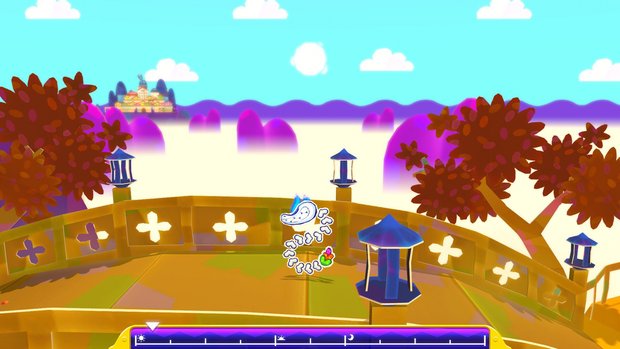
Kulebra and the Souls of Limbo is a gorgeous papercraft adventure game with 2D cartoon characters inhabiting a 3D world. Every location displays vibrant colors bringing them to life, from the lush greenery of a flower shop, to the bright red- and gold-trimmed interiors of the Wing Hotel. Characters are animated with a charmingly low frame count, making them look like moving stills from a pop-up book. Small flourishes add personality to your interactions: Krow, a living crow working for the bird-run Wing Union who can travel between the worlds of the living and the dead, introduces himself in every encounter with a pop of confetti shooting out from his wings. In fact, every bird who works for the Wing Union introduces themselves in the same way, and it can lead to some pretty comical moments. Your journey is accompanied by a wonderful soundtrack made up of acoustic guitars and trumpet. While typically sitting comfortably in the background, the music swells in high-intensity moments and nails a balance between lighthearted fun and deep emotion.
The game is split up into five chapters, with each focusing on one specific group of characters that are stuck here for various reasons. The first chapter focuses on a family of florists trying to sell the last of their stock, while the second chapter focuses on an Old West-style town with a ruthless sheriff forcing the small group of townsfolk still around to stay indoors at night for reasons unknown. You’ll meet a wide variety of souls, each with their own goals and wants to be fulfilled in order to move on to wherever they’re meant to go next. While there is no spoken dialogue, text boxes are accompanied by a charming gibberish that is different for every character. This gives them an additional layer of personality that helps set them apart from each other.
As you talk with these individuals and get to know a bit about them, you’ll undertake tasks that ultimately help their souls move on. But there’s a catch: time is always moving forward in Limbo via an in-game clock, as indicated by a timeline bar slowly advancing at the bottom of the screen, and as time passes the characters around you will go about their day. Whenever you talk with someone, interact with a puzzle, or open your inventory/journal, the timer will momentarily stop, but whenever you are wandering through the world normally, the timer will continue marching onward. While you cannot move backwards in time, you can move forward by having Kulebra rest at various spots (benches, couches, beds, etc.) until the next time marker for the day: Dusk/Evening, Night, or until the following Morning.
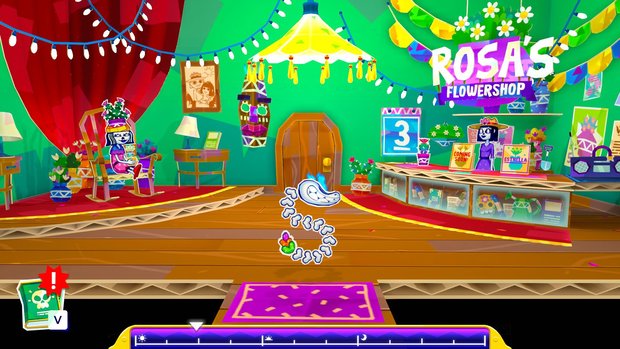
Once the day reaches its end, however, Limbo’s true curse is revealed: all the lost souls are reset to where they started at the beginning of the day, and their memories of all events that transpired that day are wiped clean. Well, with two exceptions – one, Kulebra does not lose his memory along with everyone else; and two, certain actions you undertake can permanently imprint themselves upon a character’s memory. These are called Soul Marks, which are created through powerful emotions or actions, and once unleashed are strong enough to withstand the looping curse of forgetfulness.
A particularly memorable character is the young teen Phani, who dons a mysterious mask and is one of the few major characters that keeps Soul Marks past the end of each game chapter. She tags along with Kulebra on several escapades, and while most souls in Limbo find peace after you make your way into their life, Phani seems to never get any closer to moving on. Phani’s caretaker and mother figure Lady Bugga is also a standout. She is bestowed with the same flaming bright eyes that Kulebra has, and is likewise unaffected by the curse of memory loss that affects all non-bright-eyed souls in Limbo. Unlike Phani, who appears as a skeletal teen in a crystal mask, Lady Bugga is a wealthy moth-woman who uses the wealth she has accrued in the afterlife to help others.
The majority of objectives involve searching for items, either to give to someone or use to progress the story. The game calls them puzzles, but honestly they are so simplistic that they’re more fetch quests than brain-teasing conundrums. Several times I had three different characters drop hints of what I needed in bold text letters, and by that point I already had the solution figured out anyway. (There’s only so many uses for a key.)
This simplicity extends to every facet of gameplay. In some sections you have to sneak past hostiles with a sight cone, but the line of sight is so forgiving that I rarely got caught even when I was barely paying attention to their walk cycles. (There are some mysterious dark creatures wandering Limbo that want nothing more than to extinguish Kulebra’s flaming bright eyes for a nefarious purpose). If you happen to get caught, the light in Kulebra’s eyes will begin to dim (further displayed as a health bar at the top of the screen whenever you’re in a dangerous area). Every time you get caught, your meter will slowly rise towards 100%, and if it reaches full darkness, it’s game over. Thankfully you can save at any time in addition to a generous checkpoint system, so if that happens you’ll usually just be sent back to the start of when you entered the zone.
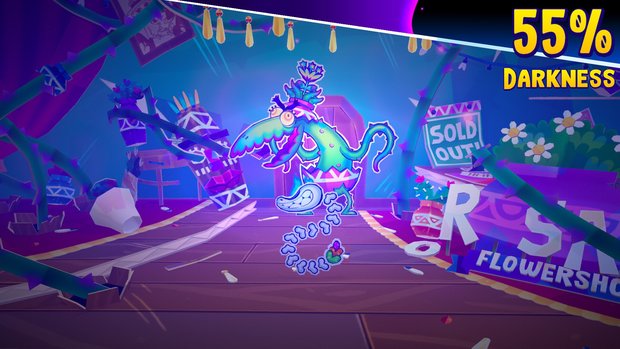
Outside of these stealth sections, each chapter ends with a similar finale: a boss “fight” with a soul you’ve been interacting with over the course of that chapter who becomes corrupted by darkness and reappears in their dark form. Similarly to when you’re sneaking around, these confrontations show your darkness bar overhead and can end your game if it ever reaches 100%. Note, however, that these are not really fights, but rather a series of questions from the soul’s dark form that you have to answer to help them calm back down and regain their senses.
Most questions from bosses are related to the characters you met during that chapter, and your journal is available at any time during questioning, so you can check your answers before submitting them if you’re ever unsure. Shaking things up slightly are questions that have no right answers provided for you to choose from. In those situations, you have to instead hit a key or button to refute their responses and call their bluff. If you answer enough questions correctly, you will get to use Kulebra’s bright eyes to enlighten the soul engulfed in darkness, and afterwards the character’s shadow will dissipate and they’ll return to their normal self.
I believe I met a game over screen twice – both times in the final area of the game. Otherwise Kulebra and the Souls of Limbo is a very easy experience throughout. While I don’t need games to be challenging, this one actively makes it difficult to figure out solutions on your own. Every interaction with characters has bolded text in important lines of dialogue, and these almost always appear in conversations before you have to figure out the item required for use in a puzzle. There are a couple of puzzles where you have to note either coordinates or safe combinations (I had to physically write these down to remember them), but these are few and far between.
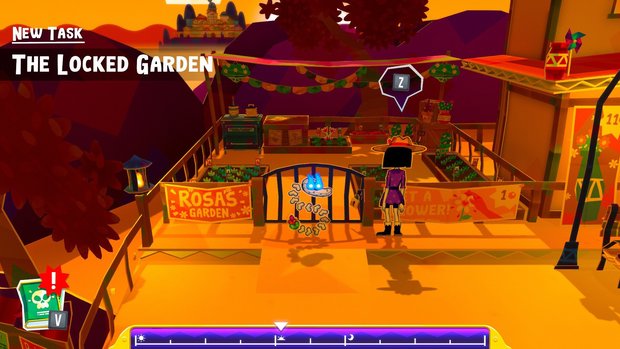
Unfortunately, it’s not just where to use items that’s heavily signposted – it’s also nearly impossible to get lost when trying to find them in the first place. And while the first two chapters have you moving from one new location to another, chapter three onward starts having you backtrack heavily through places you have already visited multiple times. This is even more egregious in areas you return to after having already sent their souls onward, as you’re essentially wandering around an empty landscape devoid of anyone to interact with. Scenes you revisit eventually have some changes here and there – especially in the plaza where large numbers of lost souls gather – but it was incredibly jarring after moving between new locales each chapter to suddenly realize there were no more left to uncover.
My biggest issue with Kulebra and the Souls of Limbo is that at the end of each chapter, typically the characters you have been interacting with will all move on after you fulfill whatever’s been keeping them tethered to that realm. In-game, this is presented as the ultimate good – they can finally rest after going through the motions over and over again in their cursed afterlife existence. But as the individual playing the game, I was shocked by how often important character plotlines just disappeared. Without spoiling anything, there’s a particularly tense sequence between two characters in which it appears likely that one of them won’t survive, even in Limbo. You hear a gunshot off-screen, and that character is never talked about again after that. There’s no wrapping up any of what you had begun to learn about the character – it just ends with little fanfare and lacks the weight I was expecting from such a dramatic moment.
Elsewhere, after each boss fight, once the character’s dark form dissipates, they typically start to fade away from Limbo as well. But very rarely is there a satisfying explanation for why they feel they have achieved what was necessary to confidently move on. It began to seem less like these were natural conclusions to character story arcs and more like the end of plot threads the game did not know what to do with.
Another curiosity is that whenever all of the souls in a particular area are gone, the building or buildings they inhabited appear decrepit and run-down, as if they hadn’t been lived in or maintained for a very long time. While I loved the idea of these philosophically empty husks where there was once life, it was weird when one character called this emptiness a form of “peace.” It didn’t come across that way in-game, nor did it seem that the degradation was the result of the time-looping curse being lifted from them.
It wasn’t even clear to me that removing the lost souls tending to these locations was actually a good thing for those still present. Who is left to repair the train when the mechanic has moved on, after all? It’s not even a useful visual indicator that there’s nothing left to do there, as you’ll still need to revisit these places for story purposes later on. But this time, instead of thriving with characters going through their daily motions – not living per se, but existing in a tangible sense – there’s only a profound emptiness in their place. I wanted to find an explanation for this and other questions but never found any. Even the final scene feels incredibly anticlimactic, to the point that I audibly exclaimed “Wait, that’s it?” after seeing the credits begin to roll.
Final Verdict
Kulebra and the Souls of Limbo has a beautiful presentation, likeable characters, and an intriguing world that I desperately wanted to lose myself in. So it’s bizarre that in a game where the key theme is to help restless souls achieve peace, there’s a lack of nearly any sense of closure to the many plot threads and story beats I was heavily invested in throughout the lengthy twelve-hour adventure. I even did something I rarely do in games – I completed every side quest, every character request, and scoured every inch of the game world for bits of lore I might have missed that would fill the gaps in my understanding, but even then I found myself left wanting. It’s still an enjoyable – if very easy – experience overall, but while the denizens of Limbo were able to move on to the next world, I wish they had stuck around a little while longer to give me the same sense of closure they apparently received.
Hot take
Kulebra and the Souls of Limbo is a gently paced, vividly colorful paper adventure filled with memorable afterlife inhabitants and a simple but fun time-looping premise. It’s a shame, then, that the character arcs often fail to reach the same satisfying conclusion for the player as they do for these wayward souls themselves.
Pros
- Gorgeous papercraft presentation
- Beautifully melodic soundtrack that balances melancholy with whimsy
- Enjoyable characters in an intriguing world
Cons
- Each gameplay element is very easy
- Significant amount of backtracking
- Surprising lack of closure among both individual character stories and the final outcome
Sam played Kulebra and the Souls of Limbo on PC using a review code provided by the game's publisher.


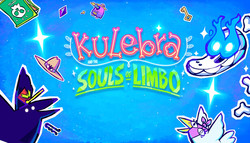








0 Comments
Want to join the discussion? Leave a comment as guest, sign in or register.
Leave a comment